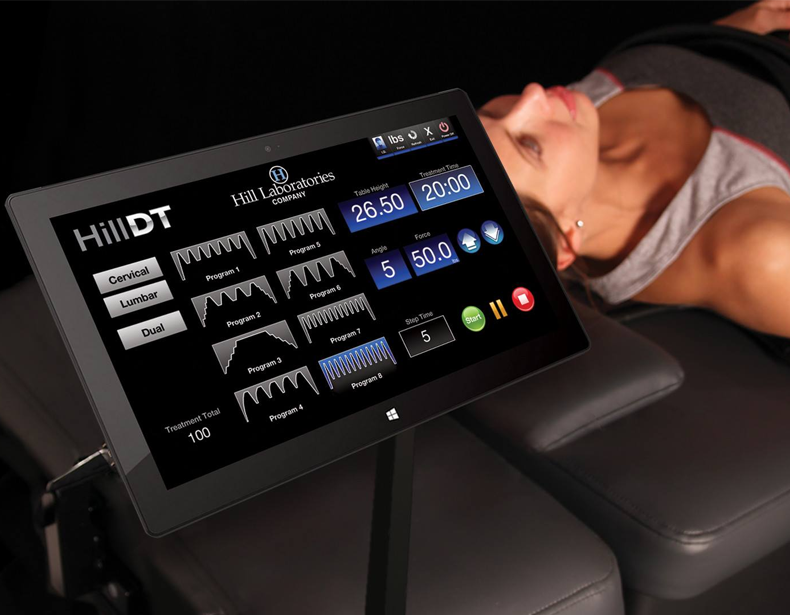DAVENPORT UNIVERSITY, MICHIGAN, USA – ANALYSIS OF OUTCOMES NON SURGICAL SPINAL DECOMPRESSION PROTOCOLS
More than 31 million Americans experience low-back pain at any given time and 80 percent of the population will experience this problem in their lifetime (Forer, 2012). But the surgical option for treating low-back pain often has postoperative complications (Street et al., 2011).
In health information management programs, students participate in real life activities associated with a healthcare organization to apply their acquired knowledge. In this case, the student project included documentation review, data collection, and analysis. Under the supervision of a doctor of chiropractic, the intern was given access to patient records dating from 2011 to 2014.
To track satisfactory rates for the spinal decompression treatment provided in the facility, the electronic health records of 163 randomly chosen patients were examined to record date of treatments, gender, chief complaint, and diagnosis. A section for comments was included from each patient to record medical history, nature of the onset, exacerbating factors, and pain indices throughout the treatment plan.
The demographic profile of the patients evaluated was fairly uniform, with a slight majority of women (54 percent) over men (46 percent). The chief complaint listed revealed that over 50 percent of the sample reported some sort of lower back pain. The remainder of complaints comprised such conditions as neck, shoulder, hip, leg, and foot pain.
The clinical evaluation showed a success rate of slightly more than 90 percent, with success defined as patients being “satisfied” or “very satisfied” with the outcome of their treatment. Of the 163 patient charts examined, only 14 patients were classified as “not satisfied” or having deemed the therapy unsuccessful. Four of those patients discontinued their care to seek alternative treatment; namely, a surgical option in an attempt to minimalise pain that was not responding to nonsurgical spinal decompression.
The majority of the patients reported looking forward to receiving care because of the positive results of their treatment. After treatment, patients reported feeling better with minimal pain and overall felt optimistic.
The results of this evaluation exceed the expected outcomes for chiropractic care. Statistical evidence shows that throughout the U.S., more than 75 percent of patients are satisfied with the end result of their chiropractic care (Blumke, 2014). In this evaluation, 91 percent of patients who complained of pain in their back or neck were pleased with their nonsurgical spinal decompression outcome.
SUMMARY
This clinical evaluation of the efficacy of spinal decompression treatment (Blumke, 2014) revealed some notable outcomes and data. An overall successful outcome of 91 percent was seen in cases that had undergone a nonoperative axial spinal decompression treatment plan.
ABOUT THE AUTHORS:
1 ZACHARY BLUMKE, Health InformationManagement student, Davenport University in Grand Rapids,Mich.
2 KAREN DALEY, PhD, RN, dean, College of Health Professions, Davenport University in Grand Rapids,Mich.
3 LINDA SORENSEN,MPA, RHIA, CHPS, chair, Health Information Management Department, Davenport University in Grand Rapids,Mich.
4 THOMAS HUNT,MBA, RHIA, CHTS-IM, PhD, associate dean, Health Information Management Department, Davenport University in Grand Rapids,Mich.
The post DAVENPORT UNIVERSITY, MICHIGAN, USA – ANALYSIS OF NON SURGICAL SPINAL DECOMRESSION PROTOCOLS appeared first on Non Surgical Spinal Care.
DAVENPORT UNIVERSITY, MICHIGAN, USA – ANALYSIS OF OUTCOMES NON SURGICAL SPINAL DECOMPRESSION PROTOCOLS
More than 31 million Americans experience low-back pain at any given time and 80 percent of the population will experience this problem in their lifetime (Forer, 2012). But the surgical option for treating low-back pain often has postoperative complications (Street et al., 2011).
In health information management programs, students participate in real life activities associated with a healthcare organization to apply their acquired knowledge. In this case, the student project included documentation review, data collection, and analysis. Under the supervision of a doctor of chiropractic, the intern was given access to patient records dating from 2011 to 2014.
To track satisfactory rates for the spinal decompression treatment provided in the facility, the electronic health records of 163 randomly chosen patients were examined to record date of treatments, gender, chief complaint, and diagnosis. A section for comments was included from each patient to record medical history, nature of the onset, exacerbating factors, and pain indices throughout the treatment plan.
The demographic profile of the patients evaluated was fairly uniform, with a slight majority of women (54 percent) over men (46 percent). The chief complaint listed revealed that over 50 percent of the sample reported some sort of lower back pain. The remainder of complaints comprised such conditions as neck, shoulder, hip, leg, and foot pain.
The clinical evaluation showed a success rate of slightly more than 90 percent, with success defined as patients being “satisfied” or “very satisfied” with the outcome of their treatment. Of the 163 patient charts examined, only 14 patients were classified as “not satisfied” or having deemed the therapy unsuccessful. Four of those patients discontinued their care to seek alternative treatment; namely, a surgical option in an attempt to minimalise pain that was not responding to nonsurgical spinal decompression.
The majority of the patients reported looking forward to receiving care because of the positive results of their treatment. After treatment, patients reported feeling better with minimal pain and overall felt optimistic.
The results of this evaluation exceed the expected outcomes for chiropractic care. Statistical evidence shows that throughout the U.S., more than 75 percent of patients are satisfied with the end result of their chiropractic care (Blumke, 2014). In this evaluation, 91 percent of patients who complained of pain in their back or neck were pleased with their nonsurgical spinal decompression outcome.
SUMMARY
This clinical evaluation of the efficacy of spinal decompression treatment (Blumke, 2014) revealed some notable outcomes and data. An overall successful outcome of 91 percent was seen in cases that had undergone a nonoperative axial spinal decompression treatment plan.
ABOUT THE AUTHORS:
1 ZACHARY BLUMKE, Health InformationManagement student, Davenport University in Grand Rapids,Mich.
2 KAREN DALEY, PhD, RN, dean, College of Health Professions, Davenport University in Grand Rapids,Mich.
3 LINDA SORENSEN,MPA, RHIA, CHPS, chair, Health Information Management Department, Davenport University in Grand Rapids,Mich.
4 THOMAS HUNT,MBA, RHIA, CHTS-IM, PhD, associate dean, Health Information Management Department, Davenport University in Grand Rapids,Mich.
The post DAVENPORT UNIVERSITY, MICHIGAN, USA – ANALYSIS OF NON SURGICAL SPINAL DECOMRESSION PROTOCOLS appeared first on Non Surgical Spinal Care.










Comments are closed.